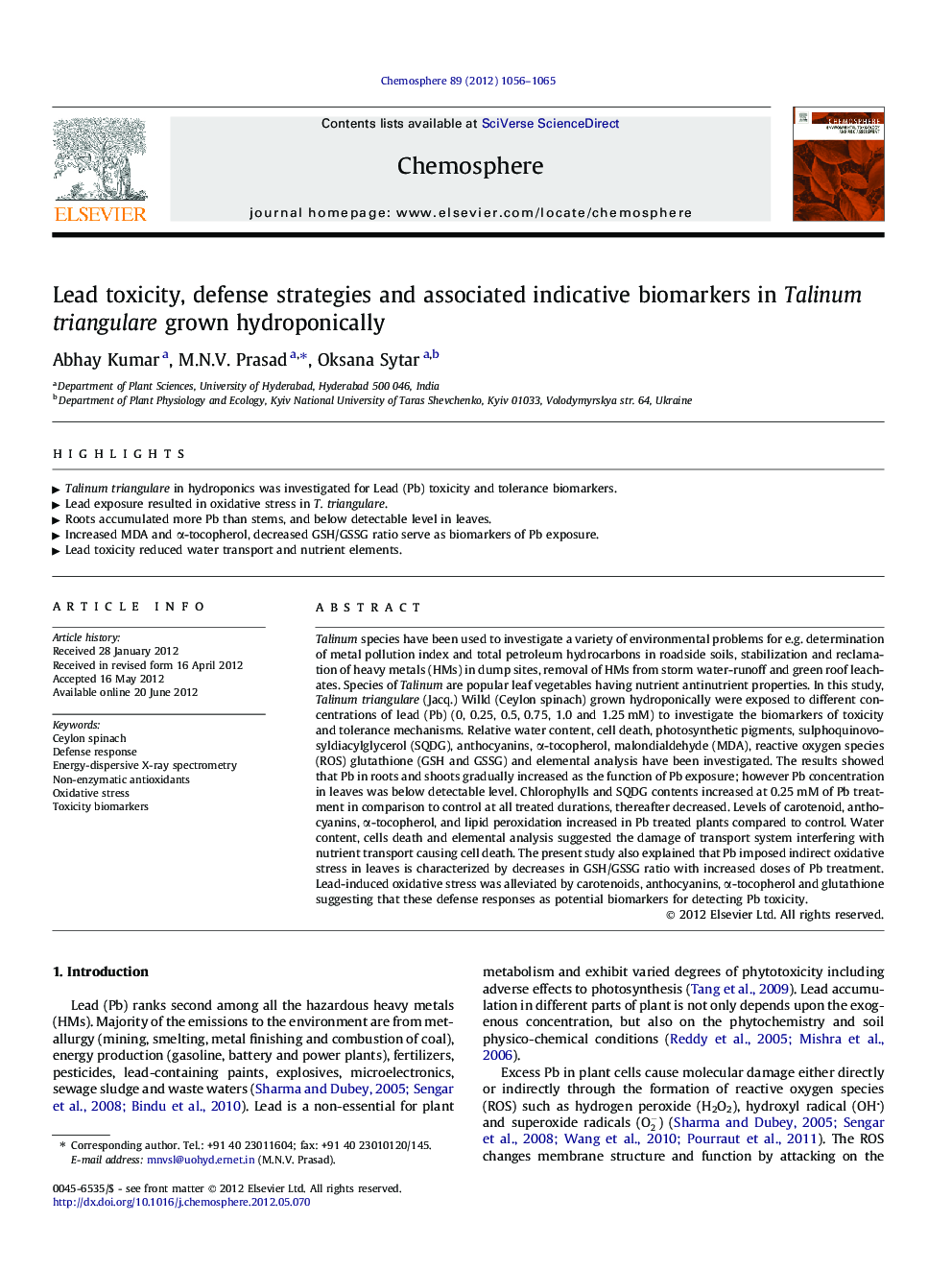| Article ID | Journal | Published Year | Pages | File Type |
|---|---|---|---|---|
| 4409817 | Chemosphere | 2012 | 10 Pages |
Talinum species have been used to investigate a variety of environmental problems for e.g. determination of metal pollution index and total petroleum hydrocarbons in roadside soils, stabilization and reclamation of heavy metals (HMs) in dump sites, removal of HMs from storm water-runoff and green roof leachates. Species of Talinum are popular leaf vegetables having nutrient antinutrient properties. In this study, Talinum triangulare (Jacq.) Willd (Ceylon spinach) grown hydroponically were exposed to different concentrations of lead (Pb) (0, 0.25, 0.5, 0.75, 1.0 and 1.25 mM) to investigate the biomarkers of toxicity and tolerance mechanisms. Relative water content, cell death, photosynthetic pigments, sulphoquinovosyldiacylglycerol (SQDG), anthocyanins, α-tocopherol, malondialdehyde (MDA), reactive oxygen species (ROS) glutathione (GSH and GSSG) and elemental analysis have been investigated. The results showed that Pb in roots and shoots gradually increased as the function of Pb exposure; however Pb concentration in leaves was below detectable level. Chlorophylls and SQDG contents increased at 0.25 mM of Pb treatment in comparison to control at all treated durations, thereafter decreased. Levels of carotenoid, anthocyanins, α-tocopherol, and lipid peroxidation increased in Pb treated plants compared to control. Water content, cells death and elemental analysis suggested the damage of transport system interfering with nutrient transport causing cell death. The present study also explained that Pb imposed indirect oxidative stress in leaves is characterized by decreases in GSH/GSSG ratio with increased doses of Pb treatment. Lead-induced oxidative stress was alleviated by carotenoids, anthocyanins, α-tocopherol and glutathione suggesting that these defense responses as potential biomarkers for detecting Pb toxicity.
► Talinum triangulare in hydroponics was investigated for Lead (Pb) toxicity and tolerance biomarkers. ► Lead exposure resulted in oxidative stress in T. triangulare. ► Roots accumulated more Pb than stems, and below detectable level in leaves. ► Increased MDA and α-tocopherol, decreased GSH/GSSG ratio serve as biomarkers of Pb exposure. ► Lead toxicity reduced water transport and nutrient elements.
